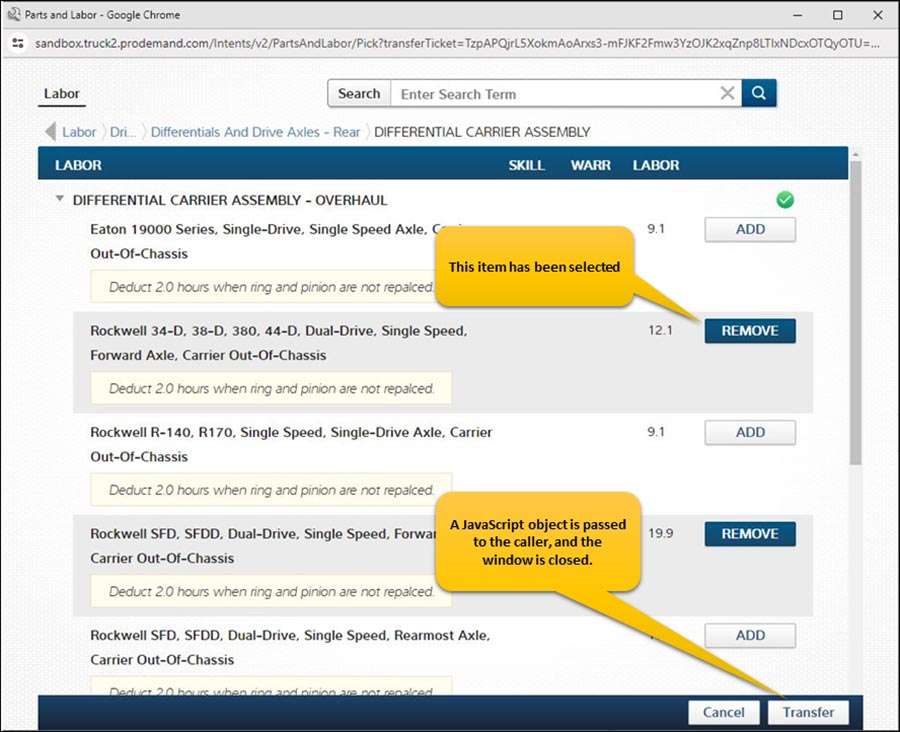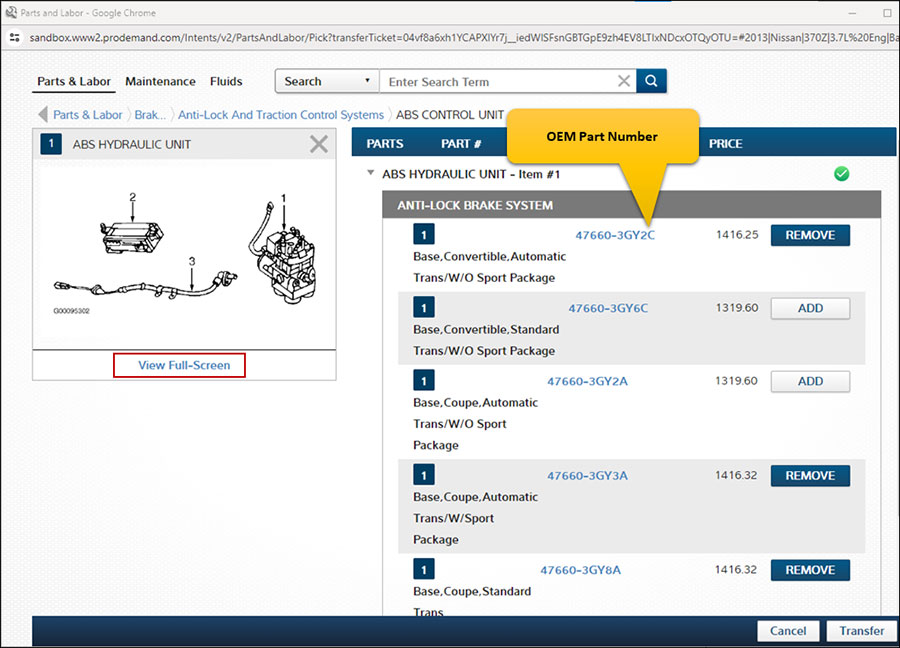Mitchell 1 provides TPMS information to Modern Tire Dealer, an award-winning publication that writes editorial content geared to independent tire dealers. We’re sharing this content in our blog, with a link to the Modern Tire Dealer website where you can read the article in full. The TPMS information in this article may also be accessed in either the TPMS or the reset procedures quick link in our ProDemand® auto repair information software, along with other important reset procedure data for the selected vehicle.
Subject Vehicles: Buick Regal 2011-2019 and Verano 2012-2017.
TPMS Warning Indicators: The TPMS warns the driver when a significant loss or gain of tire pressure occurs in any of the 4 tires and allows the driver to display the individual tire pressures and their locations on the driver information center (DIC).
When the TPMS detects a significant loss or gain of tire pressure, the tire pressure monitor indicator icon is illuminated on the instrument cluster and, if equipped, a check tire pressure type message is displayed on the driver information center. Both the indicator icon and driver information center message can be cleared by adjusting the tire pressures to the recommended pressures and driving the vehicle above 25 mph (40 km/h) for at least 2 minutes.
NOTE: If power is disconnected from the BCM or if the vehicle battery is disconnected, each tire pressure monitor sensor ID is retained but all the tire pressure information is lost. The DIC will display all dashes and the scan tool will indicate a default tire pressure value of 1,020 kPa (148 psi) for each tire. Driving the vehicle above 25 mph (40 km/h) for at least 2 minutes will activate the sensors causing the DIC to display the current tire pressures.
The BCM has the ability to detect malfunctions within the tire pressure monitoring system. In the event a DTC is set, the tire pressure monitor indicator icon on the instrument cluster will flash for 1 minute and then remain illuminated after the ignition is turned ON and the instrument cluster bulb check has been completed. Any malfunction detected will cause the driver information center to display a service tire monitor system type message. Driver Information Center (DIC): Press MENU on the turn signal lever until Vehicle Information Menu is displayed.
Scroll through the following menu items to select Tire Pressure:
- Unit
- Tire Pressure
- Remaining Oil Life
The display will show the approximate pressures of all four tires. Tire pressure is displayed in either kilopascal (kPa) or pounds per square inch (psi).
TPMS Reset Procedures: NOTE: The TPMS sensor Relearn procedure must be performed after every tire rotation, BCM replacement, or sensor replacement.
When the tire pressure monitoring system detects a significant loss or gain of tire pressure, the tire pressure monitor indicator icon is illuminated on the instrument cluster and, if equipped, a check tire pressure type message is displayed on the driver information center. Both the indicator icon and driver information center message can be cleared by adjusting the tire pressures to the recommended pressures and driving the vehicle above 25 mph (40 km/h) for at least 2 minutes.
Memorizing Sensors with the HDS: NOTE: The TPMS Sensor Tool (AKS0620006) has been superseded by the ATEQ VT55 tool, and is recommended for use on all Honda vehicles. 1) With the ignition switch in OFF position, connect the HDS to the 16-pin Data Link Connector (DLC) located under the left side of the dashboard. 2) Turn the ignition switch to ON position, and verify that HDS is communicating with the TPMS control unit. NOTE: If “Not Defined” displays on the HDS, turn the ATEQ VT55 OFF, rotate the tire 1/4 turn, turn ON the initializer, and try to initialize again. Repeat procedure until a response is shown. NOTE: If the vehicle’s ignition switch is turned OFF before all sensors are memorized, the memorizing ID is canceled. 3) Hold the ATEQ VT55 tool (recommended), or the TPMS sensor tool AKS0620006 near one wheel, and memorize the pressure sensor ID by following the screen prompts on the HDS. If TPMS control unit is still having trouble learning ID(s), refer to appropriate service information. 4) Repeat the last step for each wheel until all four sensor ID(s) are memorized. When all are memorized, the low tire pressure indicator will blink. 5) Turn ignition OFF. 6) Test drive the vehicle at 28 mph or more for at least one minute. Monitor the low pressure indicator to be certain it does not blink. NOTE: If it has been more than five minutes since the end of the last test drive, the tire pressure sensors will need to be reactivated with the ATEQ VT55. 7) Turn the ignition switch OFF, reduce the pressure in one tire until it is below 28 psi then turn ignition switch ON. 8) Test drive the vehicle at 28 mph or more for at least one minute. Verify that the low pressure indicator turns on. 9) Verify that the low pressure indicator turns on, and then re-inflate the tire. 10) Repeat steps 7 through 9 for all other tires. Clear any DTC(s) with the HDS.
Demounting/Mounting Procedures: CAUTION: The tire should be demounted from the wheel using the tire changer manufacturer’s instructions. Use the following information to avoid damage during the demounting/mounting procedures. NOTE: If the vehicle’s tires are replaced with those not having a TPC Spec number, the TPMS may give an inaccurate low pressure warning. Non-TPC Spec tires may give a low pressure warning that is higher or lower than the proper warning level achieved by TPC Spec numbered tires. NOTE: The TPMS sensor Relearn procedure must be performed after every tire rotation, BCM replacement, or sensor replacement. See “Reset procedures.”
Tire Pressure Sensor: CAUTION: Do not inject any tire liquid or aerosol tire sealant into the tires, as this may cause a malfunction of the tire pressure sensors. If any tire sealant is noted upon tire demounting, replace the sensor. Also remove all residual liquid sealant from the inside of the tire and wheel surfaces.
Removal:
1) Raise the vehicle on a suitable support. Remove the tire/wheel assembly from the vehicle.
2) Demount the tire from the wheel following the tire changer manufacturer’s instructions.
3) Remove the Torx screw (1) from the tire pressure sensor (2) and pull it straight off the tire pressure valve stem (3).
4) Remove the tire pressure valve stem by pulling it through the rim.
Read more:






